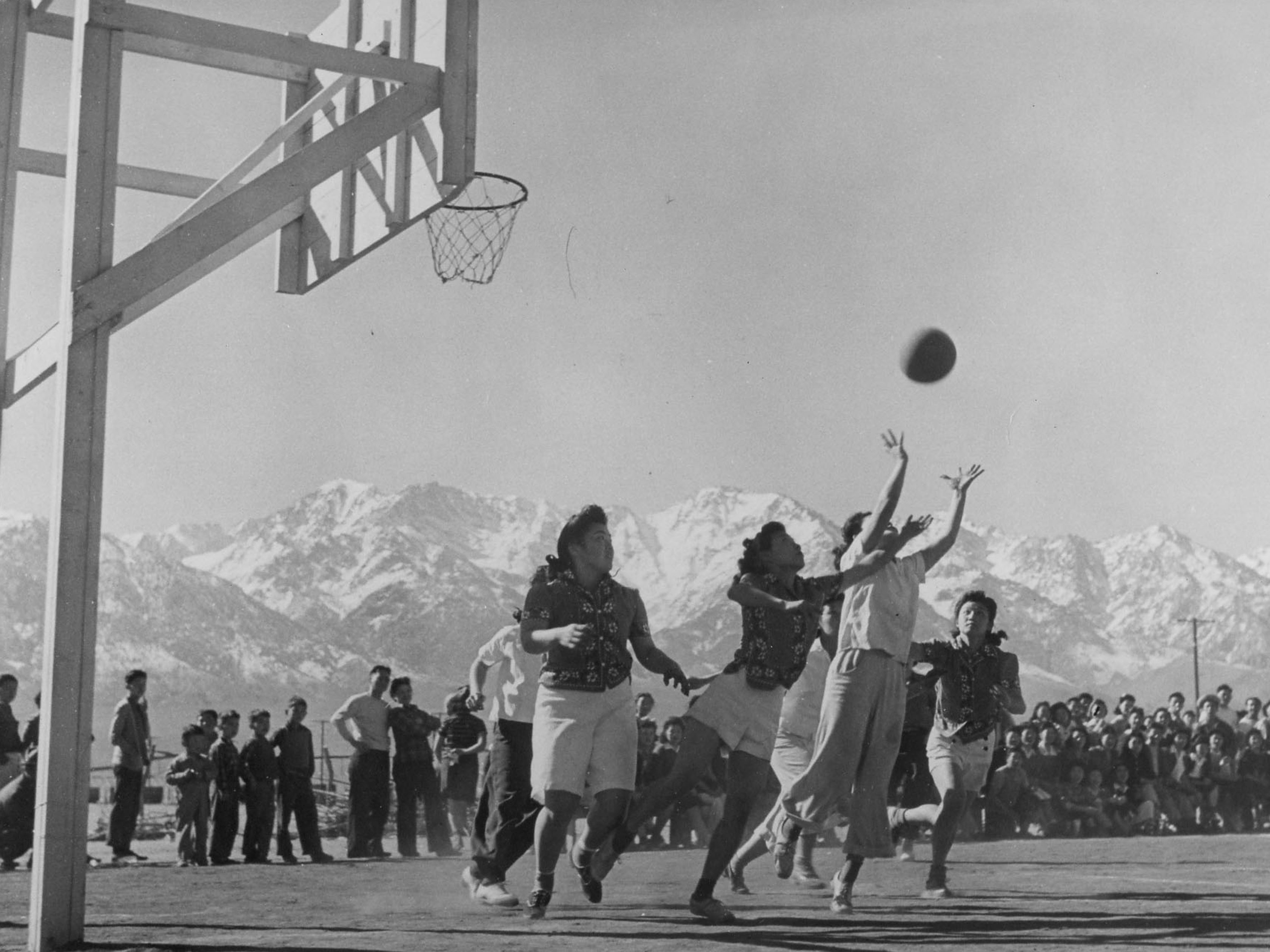Vocabulary for talking about photographs
Check out the “Perspectives Chart” on page 2 of this PDF.
More in-depth reading: Making Sense of Documentary Photography (PDF)
Vocabulary for talking about photographs
Check out the “Perspectives Chart” on page 2 of this PDF.
More in-depth reading: Making Sense of Documentary Photography (PDF)
Following the attacks on the World Trade Center and Pentagon on September 11, 2001, many American citizens called for closer scrutiny of Muslims, and a few people called for internment of Muslim Americans. The parallels between this discourse and the anti-Japanese sentiment in the U.S. following the attack on Pearl Harbor are clear, but Americans continue to have some of the same concerns about “foreign elements” threatening U.S. security from within our borders. Of course, the internment of Japanese Americans provides us with one lens through which to examine contemporary discourses about “un-American” elements in the U.S.
1. Get together with a small group and have each person read one of the following articles and summarize it for the group.
Note: Some of you will find one or more of these articles very difficult to read and perhaps outright offensive.
2. Together as a group, read and discuss the following blog post.
3. Visit the Densho Archive. Log in using the guest access button. Navigate in the left column to “Topics” and then “September 11, 2001 and Aftermath.” Scroll down in the pane on the right to see a list of interviews. You won’t be able to view the interview videos on your iPad, but you can click on the link to the lower right of each video’s page to read the transcripts. Assign group members to read and summarize the transcripts for the following interviews:
Were you surprised by these Japanese Americans’ reactions to September 11 and to the Islamophobia that followed the events of that day? Why or why not? Do you think the experiences and opinions of former internees should influence American policy about domestic internment?
4. Discuss these questions.
 Basketball game at Manzanar by Francis Stewart
Basketball game at Manzanar by Francis Stewart
Primary and secondary sources on the internment of Japanese Americans during World War II:
The online collection of Clara Breed, or “Miss Breed” as she was known by her young library patrons, includes over 300 letters and cards received by Breed from Japanese American children and young adults during their World War II incarceration.
Internment photography of Dorothea Lange, Ansel Adams, Francis Stewart, and Clem Albers
The photographic record of Manzanar is one of the most comprehensive of any of the War Relocation Authority centers. The WRA hired Dorothea Lange, Clem Albers, and Francis Stewart to photograph the camps. Ansel Adams volunteered to photograph Manzanar at the request of his friend, Ralph Merritt, who was the director of the Manzanar War Relocation Center.
A More Perfect Union: Japanese Americans & the U.S. Constitution (from the Smithsonian)
During the opening months of World War II, almost 120,000 Japanese Americans, two-thirds of them citizens of the United States, were forced out of their homes and into detention camps established by the U.S. government. Many would spend the next three years living under armed guard, behind barbed wire. This exhibit explores this period when racial prejudice and fear upset the delicate balance between the rights of the citizen and the power of the state. It tells the story of Japanese Americans who suffered a great injustice at the hands of the government, and who have struggled ever since to insure the rights of all citizens guaranteed by the U.S. Constitution.
Internment of San Francisco Japanese: Articles from The San Francisco News
Japanese American Relocation Digital Archives: Primary sources and historical context for the internment
Copyright © 2025 · Minimum Theme on Genesis Framework · WordPress · Log in